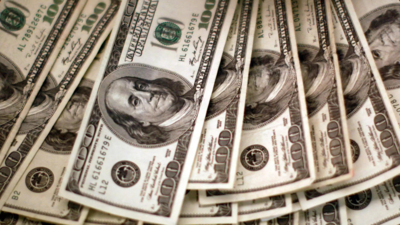Introduction: Understanding India’s Financial Backbone
India’s foreign exchange reserve (Forex reserve) stands as a crucial indicator of the country’s economic health, signifying its ability to meet international financial obligations. Comprising a pool of assets denominated in foreign currencies and gold, these reserves serve as a safety net for the nation, providing protection against external shocks and ensuring the stability of the rupee. In this insightful article, we delve into the intricate makeup of India’s Forex reserve, exploring its various components, investment strategies, and the significance it holds for the Indian economy.

Image: timesofindia.indiatimes.com
Components of India’s Forex Reserve
India’s Forex reserve is meticulously diversified, mirroring its strategic approach to financial management. The reserve comprises an array of financial instruments, each playing a distinct role in achieving overall reserve management objectives. Let’s examine the key components:
Foreign Currency Assets
The core of India’s Forex reserve lies in foreign currency assets (FCA), which account for close to 80% of the total reserve. These assets encompass a wide range of currencies, including the US dollar, euro, pound sterling, and yen. Diversification across multiple currencies enhances the reserve’s resilience, reducing exposure to potential risks associated with any single currency.
Gold
Gold holds a significant position within India’s Forex reserve, contributing approximately 6-7%. The precious metal’s traditional status as a safe haven asset provides a cushion during periods of market volatility and global economic uncertainty. However, gold’s price fluctuations can introduce some degree of risk to the overall reserve.

Image: www.civilsdaily.com
Special Drawing Rights (SDRs)
SDRs represent a crucial component of India’s Forex reserve, allocated by the International Monetary Fund (IMF). These reserve assets possess the advantage of being relatively low-risk and highly liquid, enabling India to utilize them as a source of liquidity in times of need.
Other Assets
“Other assets” constitute a small portion of the Forex reserve, encompassing investments in deposits with international financial institutions and bonds issued by foreign governments or corporations. These assets offer diversification benefits and seek to maximize returns while maintaining liquidity.
Investment Strategies and Management
India’s Forex reserve is managed by the Reserve Bank of India (RBI), the nation’s central bank. To ensure optimal utilization of the reserves, the RBI adopts a well-defined investment strategy that seeks to strike a balance between safety, liquidity, and returns. The strategy involves:
Maintaining Adequate Liquidity
Liquidity is paramount for Forex reserves, enabling the RBI to meet short-term obligations and intervene in currency markets when necessary. The RBI carefully manages the reserve’s composition, ensuring access to highly liquid assets that can be readily converted into cash or used to settle international payments.
Pursuing Diversification
Diversification is fundamental to India’s Forex reserve management strategy. By investing across various asset classes, currencies, and regions, the RBI mitigates risks associated with fluctuations in any single asset or market. This approach enhances the reserve’s stability and resilience against external shocks.
Maximizing Returns
While preserving the safety of the reserves remains a priority, the RBI also seeks to optimize returns on these assets without exposing them to undue risk. The RBI actively manages the reserve’s investment portfolio, exploring opportunities for growth and decent returns, within acceptable risk parameters.
Significance of Forex Reserves for the Indian Economy
India’s Forex reserves play a multifaceted role in supporting economic stability and growth:
Strengthening the Rupee
Forex reserves act as a formidable buffer against external economic shocks, such as currency depreciation or balance of payments crises. Ample reserves provide the RBI with the firepower to intervene in the foreign exchange market, stabilizing the value of the rupee against other currencies.
Ensuring Import Capacity
India heavily relies on imports for essential commodities, including oil and natural gas. Adequate Forex reserves ensure that the nation can meet these import requirements and avoid supply disruptions due to currency fluctuations. Reserves provide confidence to international suppliers, facilitating trade and economic activities.
Promoting Foreign Investment
A robust Forex reserve instills confidence among foreign investors, enhancing India’s attractiveness as an investment destination. Stable reserves signal the country’s economic resilience, minimizing concerns over capital flight and currency risks, thereby attracting foreign direct investment (FDI) and portfolio investments.
Indias Forex Reserve Comprise Of
Buttressing External Debt Repayments
Forex reserves provide a safety valve for meeting external debt obligations, including principal and interest payments on foreign sovereign bonds. Sufficient reserves assure foreign creditors of India’s ability to honor its debt commitments, maintaining its creditworthiness and






